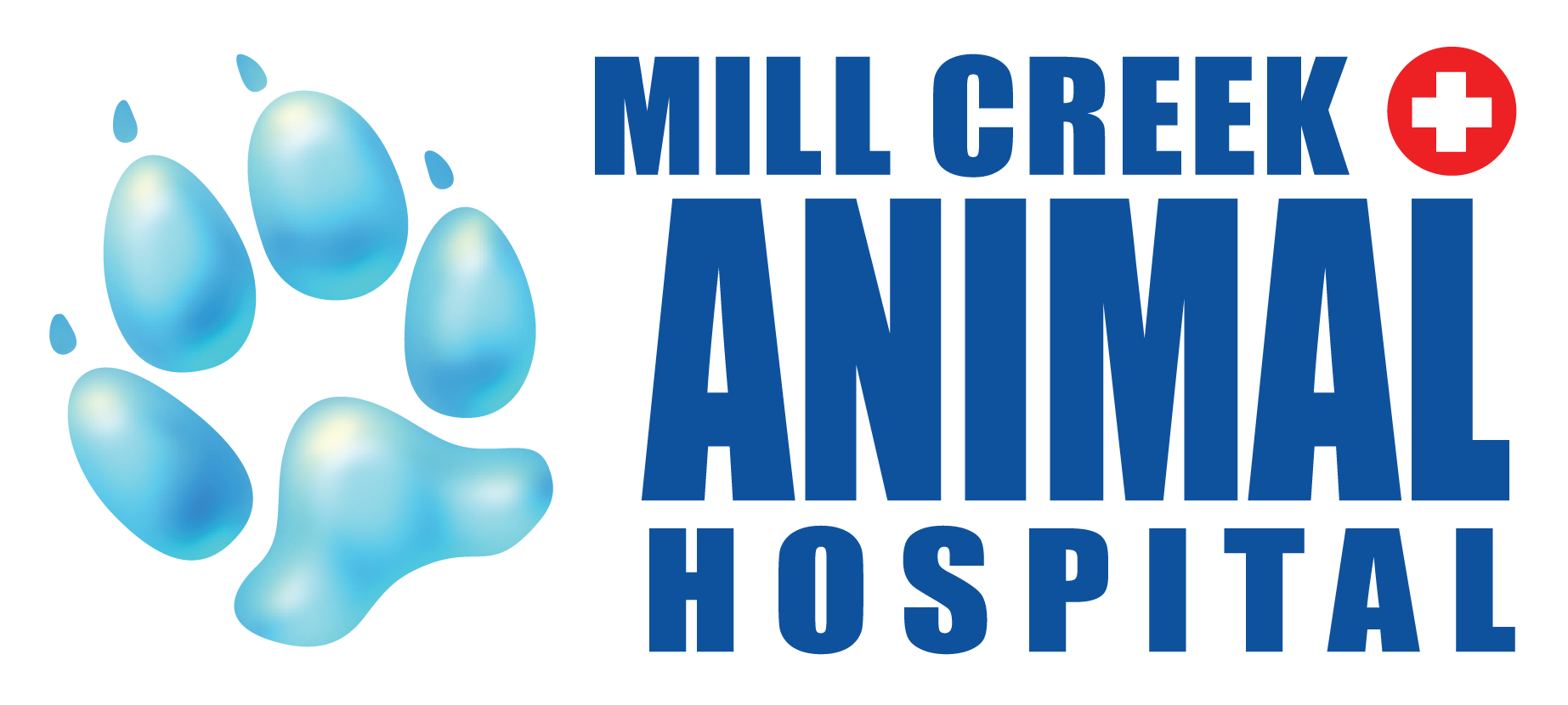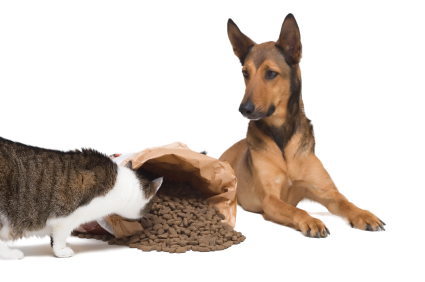The pet food world can be daunting. There are so many beliefs circulating in society today that it can make even the most seasoned pet owner question what to feed their furry family member. There are companies that have great advertising campaigns that highlight the growing trend of natural foods which reflect highly on our own food preferences and appear wonderful, until their labels are investigate further. Even walking into a pet food store can be an overwhelming task, with sales representatives that have a financial motivation to sway your choice.
The BEST option for any pet owner is for them to confidently make a choice on their OWN, whether it is influenced by advertisements, what is available at a pet store, or even what is recommended by a veterinary staff member. When a veterinarian or Mill Creek Animal Hospital staff member is making a recommendation about food, it is likely due to what we are seeing in your pet’s overall health. In certain circumstances, a veterinarian might even use blood work to help determine the best diet for your pet and decrease any health concerns. So in saying that, I would like to give you some pointers on areas to look at in order to feel comfortable with whatever food choice you make.
1) Whenever we analyze a food to make sure it is really the best option, you can look for the AAFCO statement on any pet food bag. This is the only thing on the bag that is regulated. It is a bit uncomfortable that there is no governing body out there to make sure that what companies claim on their bag is actually what you are purchasing. When reading an AAFCO statement you are looking for two things: if it is formulated or feeding trial tested. What this means is that a formulated diet is based off of numbers rather than what your pet might actually need. A feeding trial means that there has been testing done on the food to support any claims the food makes.
2) What age bracket the food is meant for is also important. We are finding that some diets on the market have ALL LIFE STAGES highlighted and what this means is that the food is formulated for the most specific pet age – which is a puppy. This can become an issue if an all life stages diet is feed to a senior pet. Each stage of life has different requirements for to meet their diet needs.
3) Along with the AFFCO statement, you will want to see what kind of ingredient analysis the product has. They usually list either Guarantee or Typical. Guarantee means that the ingredients used are routine recipe whereas typical means there isn’t as much of an assurance on the product.
We become concerned that a diet might not be the best balanced option for our pets if they are formulated for all life stages and have a typical ingredient analysis. I hope these tips help will give you the confidence to make a choice for your pet’s food.
By Jocelyn Husch, AHT



